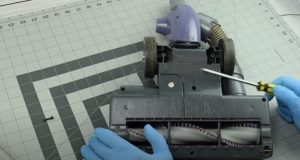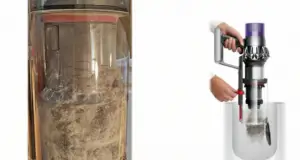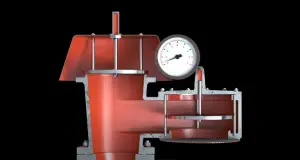Learn about How do Vacuum Chambers work?
The vacuum chamber is a device that creates a vacuum to be used for various purposes. Vacuum chambers can be found in many labs and science experiments around the world.
They are used as pressure vessels, temperature control devices, or even as reaction vessels for chemical reactions. In this article, we will discuss how do vacuum chambers work so you can see if they may have any applications you need.
What is a Vacuum Chamber?
A vacuum chamber is a solid container designed to have air and pressure extracted from it in order to examine how materials, components, and parts behave under vacuum conditions. It is also utilized to evaluate the functioning of applications throughout manufacturing processes.
The vacuum chambers are designed in such a way to withstand this kind of pressure. The pressure is generated by a vacuum and can revive different environmental conditions where a vacuum can exist.
Uses of a Vacuum Chamber
Different industries use vacuum testing to determine the stability of packaging. This stability is required to travel by air to several locations around the world. While in aerospace and space industries, this testing is mandatory to check the ability of components to withstand the pressure and vacuum of space.
In addition, manufacturers in several industries mostly use it in different stages of their items’ manufacturing processes. However, its size mainly depends on the application that may vary greatly. This size may vary from smaller benchtop chambers used to test miniature parts and objects to larger chambers that can encompass objects of a very larger nature.
Vacuum chambers can help manufacturing companies in a great way. By using this in their processes, they may get a better, reliable, and more consistent final item.
How do Vacuum Chambers Work?
A vacuum chamber works by removing gases and air from a vessel or chamber via a vacuum pump by creating a vacuum. It may be defined as a space that is entirely vacant of matter.
It is very important to note that creating a vacuum space is not a “sucking’ process. In this process, a molecule is only removed from a chamber when it may enter the pump through random collisions. Most of us make a common mistake and think that a vacuum pump sucks gas from a chamber.
Unless a molecule that is propelled by some random collision enters the pumping system of a vacuum pump, you may not remove it from the chamber. Also, the pump does not reach outside, grasp a molecule from the chamber, and suck it in.
However, you can easily control the pressure just by limiting the removal of gas from the chamber. It can also be done by metering gas into the chamber at the exact time of pumping.
However, all vacuum chambers are subjected to a small amount of atmospheric leakage. And how many leaks may occur is called the “leak-up-rate”. In case you want to maintain the desired pressure in the chamber, it is important to continue pumping at a few levels to offset the leak-up rate.
Materials of a Vacuum Chamber
Vacuum chambers may be made up of different materials. However, metals are possibly the most prevailing vacuum chamber material. But the pressure, permeability, and strength are the considerations while choosing chamber material.
Only a few materials can be used for making vacuum chambers due to particular property needs like resistivity and thickness among others. Meanwhile, some common materials are:
- Mild steel
- Brass
- Aluminum
- Glass
- Acrylic
- Stainless steel
- Hardened steel
- High-density ceramic
Design of Vacuum Chamber
The design of a vacuum chamber may be determined by its usage whether it is industrial or application. For instance, a chamber that you may use for environmental or materials testing purposes may be very different from the one which is used in large-scale industries.
Like that, there are many variables that you need to take into consideration to have access, instrumentation, viewing, and temperature control. Some important component design options may include:
- Pumping ports
- Viewports or lighting
- Gas or fluid injection ports
- Access by automation or other vacuum chambers
- Chamber and sealing materials
- Ports for metrology or instrumentation
- Heating or cooling
- Access ports, doors, or hatches
Moreover, along with standard porting and instrumentation options, chamber customization enables another level of design configuration. This configuration is to accommodate even the very abstract applications. Such as double-wall, water-cooled chambers may be specified to give continuous circulation throughout the chamber.
Types of Vacuum Chambers
These are built-in various shapes and sizes with the only limitations being engineering know-how. The standard types of vacuum chambers may be classified as:
Box Vacuum Chambers
Mostly there are 2 types of box-shaped vacuum chambers. These are rectangular and cubic or box chambers. The rectangular one is designed for the ultra-high vacuum that may reach pressures as low as 100 nano-pascals. On the other hand, box shapes are capable of performing a full spectrum of vacuum testing. This testing may include degassing, tribology, film deposition, and the stimulation of outer space.
Cylindrical Vacuum Chambers
This type of vacuum chamber can be vertical or horizontal. In cylindrical type, the shape of the chamber is often the determining factor in accessing the method of the chamber. You can access horizontal ones by openings at both ends. On the other hand, you can access the vertical chambers in a variety of different ways that may include lifting the chamber off its base.
Bell Jar Vacuum Chambers
These types of chambers are similar to cylindrical ones and the only difference is their welded domed top. The Bell Jar vacuum chambers are made from metal or Pyrex depending on the type of test and item criteria. Besides that, these vacuum chambers come in a wide variety of sizes in different combinations like baseplates and feedthrough collars.
55 Gallon Drum Vacuum Chambers
You may find a lot of uses for 55-gallon drum vacuum chambers such as mixing, processing, and degassing. This type and size of the vacuum chamber are less expensive and very convenient as compared to other sizes and types.
Conclusion
We hope that you get the idea of how do vacuum chambers work and why you need to have one. Now that you are aware of how they work, it is time for you to look out and find the best vacuum chamber supplier near your location.




